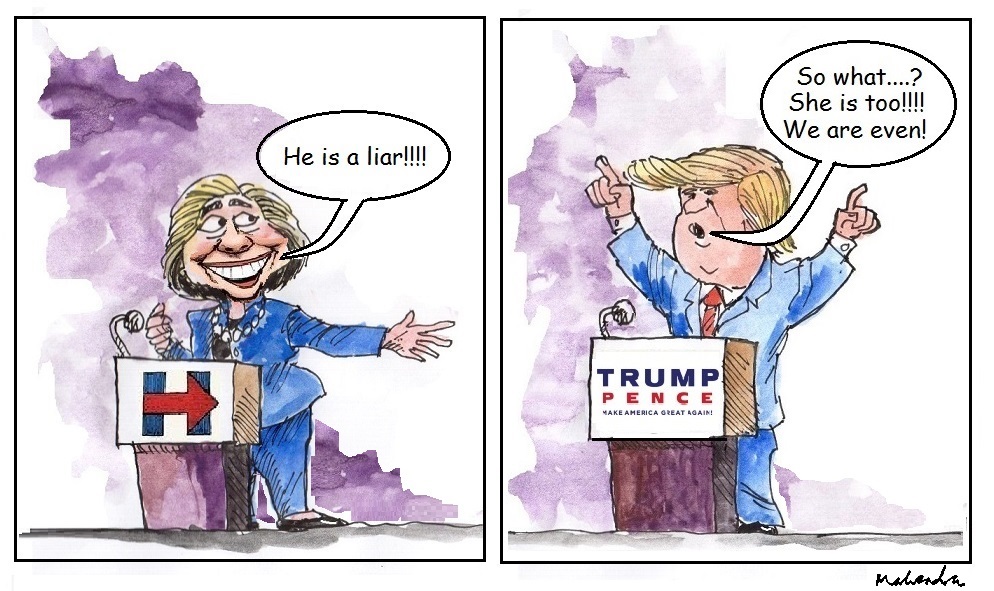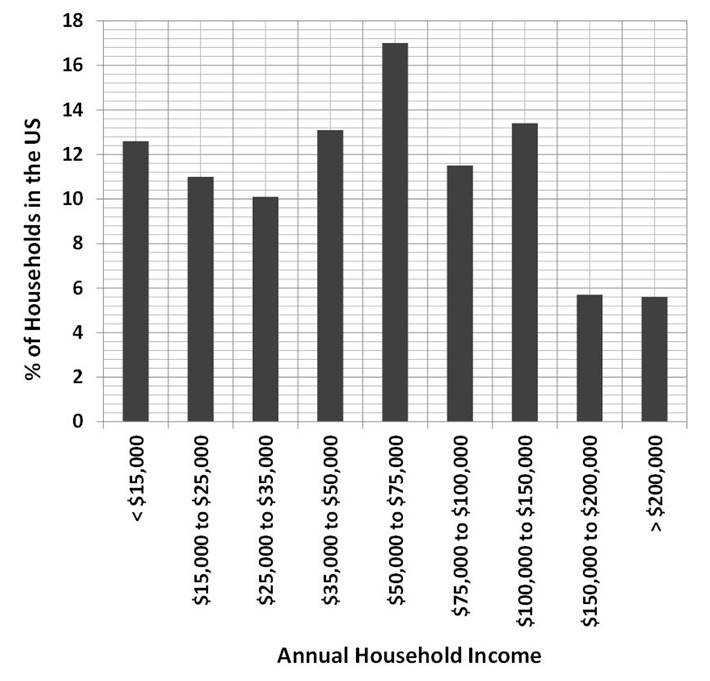By Kollengode S Venkataraman
This November, millions of voters in the US will ponder which box to check — whether to go with Hillary Clinton, or with Donald Trump, or to simply leave both boxes blank. Sigh! Several expressions describe my dilemma — between the Devil and the Deep Blue Sea, or a rock and a hard place; and Morton’s Fork, all describing situations people face in life with two or more equally bad options. My horizon is already on 2020.
It is unbelievable that the Republican Party, out of the seventeen candidates seeking the nomination — some of them astute pols rooted in the GOP system — ended up electing a neophyte in US electoral politics, Donald Trump. One would think that someone like Trump, a billionaire real estate mogul and casino owner with dicey political and legal business dealings and decisions, would prefer to stay away from the glare of public scrutiny to which presidential candidates get exposed to.
Trump does not have the backing of the GOP heavy weights and elected officials in Congress and the states, not to speak of rich donors, think tank types, and conservative columnists. Many have publicly walked away from him. Only Right-wing talk show hosts on radio and cable TV are rooting for him. Trump’s foolhardy courage is remarkable.

The lack of courage among potential Democratic candidates was pitiful. Fearing the Clinton Machine, nobody had the spine to throw their hat in the ring! If Hillary Clinton wins the election in November, as is predicted by analysts, pundits and bookmakers, she will thank Republicans for giving her Donald Trump as her opponent. With much passion against her among Republicans and many Independents, and many
Democrats lukewarm towards her, Hillary was vulnerable otherwise.
In spite of all the negatives, the billionaire Trump’s bravado on a host of domestic, immigration, foreign policy, and defense issues, as outlandish as they are, resonate well with the working class, mostly white and less educated Americans. It is not hard to understand this.
In the US, only 33% of whites have a bachelor’s degree or better; 90% have a high school diploma or its equivalent. (The stats are worse for blacks and Hispanics). They worked grueling hours in assembly lines, steel mills, fossil fuel industries, and mining/metal industries, but lived comfortably, with all the accoutrements of a good life — two-car garages, boats, vacations… … Globalization and Free Trade wiped out these jobs, and the less educated working class bore the brunt of this brutal transition.
In the 2012 election cycle both the GOP and the Democratic candidates were vying with each other to offer tax cuts for the “middle class.â€Â When pressed to define middle class, they said it was families with an annual income under $250,000! In the US, only around 6% of households have annual income more than $200,000. See below (Source: US Census, 2014):

The latest census data on the US Household income.
That is, political candidates saw themselves as “Middle Class,†even though in terms of their income, net worth, and other intangible assets like access to resources and their wide social and political network, they are the Ruling Elite. With this bizarre definition of middle class, people making between $60,000 and $100,000 can call themselves the “working poor,†while the American median family income is around $55,000.
No wonder, the upper echelons of the GOP establishment was out-of-sync from the problems of the white working class, the base of the GOP. In the primaries, these Republican voters, in disgust, opted for a total outsider, the billionaire Trump, whose rhetorical flourishes resonated with them on many domestic, immigration, military, and trade issues, which they saw as the causes for their anxieties. By electing Trump, they repudiated the GOP establishment.
This does not mean that it is party time for Hillary Clinton and her followers before the elections are over. For one, Hillary Clinton is not in the mold of Golda Meir, Margaret Thatcher, and Angela Merkel, all first-time women leaders of their countries. Meir was the prime minister of Israel (1969-74); Thatcher was the prime minister of the UK during the Reagan years, and Merkel, the current chancellor of Germany. These women became powerful world leaders on their own steam.
Hillary owes her political career to being the wife of Bill Clinton, the popular two-term Democratic president. Without being First Lady with Clinton as her last name, one wonders whether the parochial New York voters would have elected a Hillary Rodham as their US Senator, just two years after she became a legal resident there. Everything in her political career in later years emanates from her being Mrs. Clinton and having stuck with him through the thick and thin of his not entirely stellar lifestyle.
So, Hillary Clinton is the American strain of the Asian archetype of wives and daughters of politicians becoming presidents and prime ministers: Corazon Aquino (Philippines); Sirimavo Bhandaranaike (Sri Lanka); Indira Gandhi (India); Khaleda Zia and Sheikh Hasina (Bangladesh); and Benazir Bhutto (Pakistan). Without their hubbies and daddies, there is no way any of these women could have come to wield so much power.
Hillary Clinton, as President Obama’s Secretary of State, carefully built her image for occupying the White House by visiting over 110-plus countries, honing her image both inside the US and outside. However, nonpartisan — or at least less partisan — observers see her imprint on US foreign policy as lackluster, despite her rock star image.
If people remember the highlights and lowlights of the 2008 Democratic primaries, Hillary Clinton’s campaign against Sen.Barack Obama then contained veiled racist flourishes to win over working-class white voters, something she now vehemently condemns in Trump. But that is politics. Even many women voters are turned off by Hillary Clinton’s negatives.
If Trump ever goes past Hillary in the delegate count and walks into the White House, he too will have to thank his stars that he had Hillary Clinton as his opponent. At least on this score, the two are even.
So, come November, both candidates’ negatives will energize their opponents to bring voters to the polling booth on Election Day. If the weather on that day is bad, only hard core supporters will show up, and anything can happen. In any case, it is unlikely that it would be a landslide victory for Hillary Clinton, either in terms of the popular vote nationwide, or in the delegate count.
That is why it is a choice among Worse, Worse, and Worse, come November. Leaving the box blank is also not a good option. There is, however, one silver lining for both candidates in this scenario: Whoever wins, voter expectation for both is so low that even if their performance is barely a passing grade, people would sigh in relief, “After all, it is not as bad as it could have been!â€Â And their cronies will spin this as their master’s great accomplishment!
Endnote: In this election cycle, with no coattail effect, and with so many negatives for both Hillary Clinton and Donald Trump, candidates for the US House and Senate for both parties are pretty much running on their own. If the anti-establishment mood plays into the voters’ psyche, people may simply vote against sitting members seeking re-election to the US House and Senate. So, the elections to the US Congress will be as important. The US Senate leadership may change hands and in the House, the GOP majority will erode, maybe even evaporate.
We are certainly living in interesting times.  ♣
